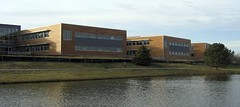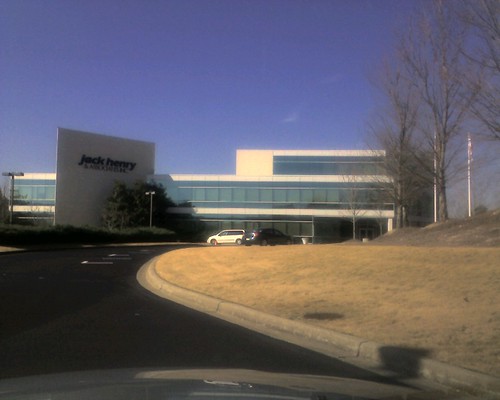Is it over for suburban corporate campuses?

Posted May 31, 2011 at 1:29PM
In the late 1990s, when Don Chen, Matt Raimi and I were researching our book, Once There Were Greenfields, we lamented the flight of business from America’s central cities to increasingly outer suburbs and farmland. In that book we frequently turned for data to metropolitan Chicago where, for example, Ameritech had built a half-mile-long “landscraper” near O’Hare Airport far from the Loop, Motorola had set up camp in Schaumberg, and Sears had fled the iconic Sears tower for Hoffman Estates.
Now, just as the tide has turned against large-lot suburban residential subdivisions, corporations are moving back into town (or, as in the case of Dublin, Ohio, doing everything they can to make their suburb more urban in character). The best and the brightest of the rising labor force, it turns out, don’t care to live and work in sprawl.
Writing in Crain’s, Eddie Baeb reports that the new trend is changing the face of greater Chicago:
“Companies seeking to tap a broader talent pool and get into the flow of innovation are looking back to the urban core. Sara Lee is only the latest suburban company to seek a new headquarters in downtown Chicago. United Airlines made the move in the past decade, as did Navteq Corp. and Allscripts Healthcare Solutions Inc.
Some of the most successful local companies of recent years, like Morningstar Inc. and Accretive Health Inc., never left the city.
“’The whole corporate campus seems a little dated,’ says Joe Mansueto, chairman and CEO of Morningstar, who moved the company's 1,100 headquarters workers across the Loop to a new office tower at 22 W. Washington St. two years ago without even considering a move to the suburbs. ‘We've always liked being in Chicago. It helps keep employees on the pulse of what's happening in our society. It keeps them current with cultural trends and possibly technological ones.’
“The change has the same far-reaching implications for the region that the suburban stampede of the post-war era had on living and working patterns around Chicago. Well-paying jobs are up in the city, raising questions for the housing market in outer suburbia. New transit challenges will arise as more workers ditch suburb-to-suburb auto commuting and board trains and buses headed downtown.”
Baeb’s article also points out that central city locations help recruiting efforts not only with young, urban professionals but also with workers throughout the region: “For most people in greater Chicago, it's easier to commute downtown than to a suburb on the other side of the metropolitan area.” That, of course, is a textbook illustration of what transportation researchers call “regional (or “destination”)  accessibility,” the single most powerful indicator among land-use factors of how far people will drive, on average, over the course of a year. Central locations both facilitate transit access and reduce driving distances.
accessibility,” the single most powerful indicator among land-use factors of how far people will drive, on average, over the course of a year. Central locations both facilitate transit access and reduce driving distances.
All this makes even more ridiculous the recent decision of the federal General Services Administration and the US Environmental Protection Agency to move EPA’s regional headquarters out of downtown Kansas City, Kansas, and 20 miles away to a completely automobile-dependent former (natch) corporate headquarters campus across the road from a wheatfield. EPA, of course, is the agency that’s all about sustainable communities these days. Except when it’s not. Will that decision affect recruiting of bright, creative young talent? Time will tell.
Move your cursor over the images for credit information.
